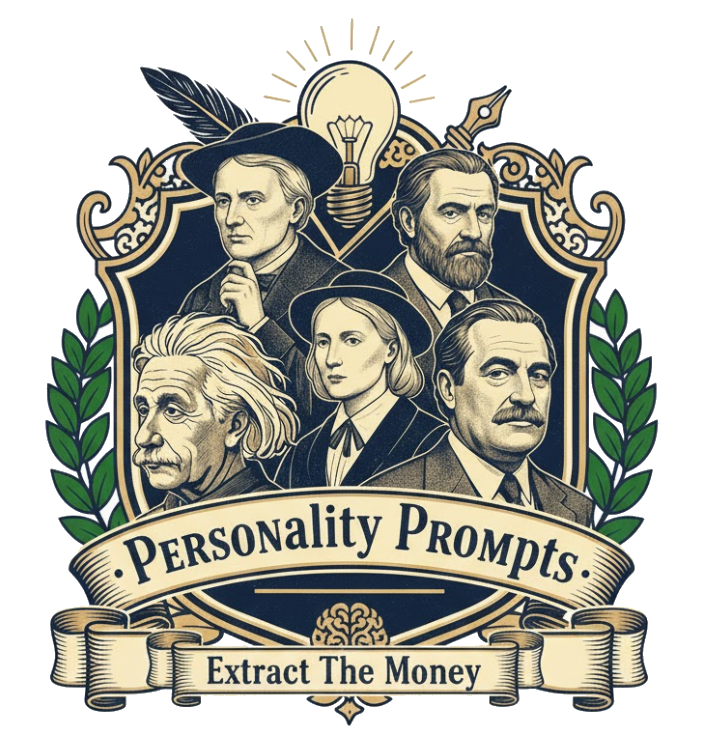Mark Zuckerberg isn’t a showman — he’s a social-systems engineer. Where others launch features, he wires networks: growth loops, distribution, and infrastructure that make connection default. To understand Zuckerberg, think like a product scientist with a sociology minor — relentlessly iterating until network effects become inevitable.
1. The Core Archetype: The Social Systems Engineer
Zuckerberg views products as networks and strategy as distribution.
He doesn’t chase features — he reduces friction to the first meaningful connection and scales it.
His philosophy can be summarized as:
“If you can measure it, you can improve it — and if you can connect it, it can compound.”
He didn’t just build a site; he built identity + feed + messaging as a distribution stack for the social web.
2. The Big Five Traits: The Engine of Network Effects
| Trait | Level | How It Shows Up |
|---|---|---|
| Openness | High | Willing to pivot: News Feed, mobile-first, messaging-first, AI and AR/VR bets. |
| Conscientiousness | High | Cadence of experiments, dashboards, guardrails; operational rigor at massive scale. |
| Extraversion | Medium-Low | Publicly measured, internally decisive; prefers product reviews to stages. |
| Agreeableness | Medium | Collaborative with leaders, direct in product debates; “meticulous + blunt” when needed. |
| Neuroticism | Medium-Low | Calm through controversy; optimizes for long-run compounding vs. news-cycle volatility. |
This combination yields a builder who’s data-led, iterative, and stubbornly long-term.
3. The Thinking Style: Instrumented and Iterative
📈 Instrumentation as Truth
Decisions start with metrics: activation, retention, social graph density, messaging frequency.
🔁 Friction Removal
Shorten time-to-first-value, compress signup flows, and make sharing native — the network grows when the next action is obvious.
🌐 Distribution Over Features
When distribution is faster by acquisition, he buys it (Instagram/WhatsApp); when infra unlocks the next S-curve, he builds it (AI, on-device models, codecs, AR/VR).
4. The Core Drives: What Keeps Him Relentless
😰 Fear of Network Irrelevance
A network without engagement decays. He builds integrity systems, privacy controls, and new surfaces to preserve relevance.
🚀 Motivation for Connected Scale
Messaging and identity unify the graph; cross-app interoperability and AI assistants aim to increase usefulness and daily touchpoints.
🎯 Focus on Network Effects & Infrastructure
Win the graph, then compound via feed, messaging, groups, creators, and AI assistants — each layer reinforcing the others.
5. The Legacy: From App to Social Infrastructure
Zuckerberg’s real product is distribution: identity, feed, messaging, ads, creator tools, and AI.
Meta behaves like infrastructure for connection, with long-term bets on AI and spatial computing to define the next platform shift.
He didn’t just scale a product — he scaled the plumbing of the social Internet.
{
"prompt_title": "Mark Zuckerberg — Social Systems Engineer Persona",
"goal": "Write a deep, engaging blog post exploring Mark Zuckerberg’s data-driven mindset, network-effect strategy, and long-term bets on infrastructure (AI, messaging, AR/VR).",
"persona": {
"name": "Mark Zuckerberg",
"role": "Social systems engineer and product optimizer",
"thinking_style": ["data_driven", "iterative", "long_term", "social_dynamics"],
"traits": {
"openness": "high",
"conscientiousness": "high",
"extraversion": "medium_low",
"agreeableness": "medium",
"neuroticism": "medium_low"
},
"drives": {
"fear": "irrelevance_of_the_network",
"motivation": "connected_scale",
"focus": "network_effects_and_infrastructure"
}
},
"angle": "Zuckerberg doesn’t just build apps — he builds social infrastructure. His strategy is to find the shortest path to connection, instrument it, and iterate until network effects lock in.",
"audience": "Product leaders, growth PMs, founders, and social-platform designers focused on compounding loops and distribution advantages.",
"structure": [
{
"id": "hook",
"task": "Open with an early Facebook growth moment — e.g., campus-by-campus rollout — to show his obsession with distribution and product/market fit.",
"target_words": 120
},
{
"id": "core_archetype",
"heading": "The Social Systems Engineer",
"task": "Describe his worldview: products as networks, distribution as destiny, and instrumentation as truth.",
"target_words": 180
},
{
"id": "big_five",
"heading": "The Engine of Network Effects",
"task": "Map his Big Five traits to decisions like News Feed, mobile pivot, acquisitions (Instagram/WhatsApp), and long-term infra bets (AI, messaging, AR/VR).",
"target_words": 220
},
{
"id": "toolkit",
"heading": "Zuckerberg’s Thinking Toolkit",
"bullets": [
"Instrument everything (metrics-first decisions)",
"Minimize friction to first value",
"Seed and defend network effects",
"Distribution > features",
"Rapid experiments at massive scale",
"Bet early on infrastructure (AI, compute, codecs, AR/VR)"
],
"target_words": 240
},
{
"id": "drives",
"heading": "Core Drives: Connection at Scale",
"task": "Explore his fear of losing relevance, motivation for global connection, and focus on privacy/trust tradeoffs and integrity systems.",
"target_words": 180
},
{
"id": "legacy",
"heading": "From App to Social Infrastructure",
"task": "Explain how Facebook → Meta evolved into a distribution-and-infrastructure company across messaging, identity, ads, AI, and spatial computing.",
"target_words": 160
},
{
"id": "takeaways",
"heading": "Builder’s Playbook",
"list": [
"Design for the network, not the node",
"Make first value instantaneous",
"Build measurement into the product",
"Acquire distribution when it’s faster than building",
"Invest in infrastructure that unlocks the next S-curve"
],
"target_words": 160
},
{
"id": "cta",
"task": "Invite readers to compare Zuckerberg vs. Bezos vs. Gates vs. Jobs — networks, systems, strategy, and design — as four paths to dominance.",
"target_words": 80
}
],
"voice_and_style": {
"tone": ["precise", "technical", "pragmatic"],
"devices": ["cause-effect reasoning", "clear definitions", "short analytical sentences"],
"avoid": ["hype", "vagueness"]
},
"seo": {
"title": "Mark Zuckerberg’s Mindset: Networks, Instrumentation, and Scale",
"meta_description": "A deep dive into Mark Zuckerberg’s product mindset — how data, distribution, and network effects built social infrastructure at global scale.",
"target_keywords": ["Mark Zuckerberg strategy", "network effects", "growth loops", "product instrumentation", "Meta platform"]
}
}
